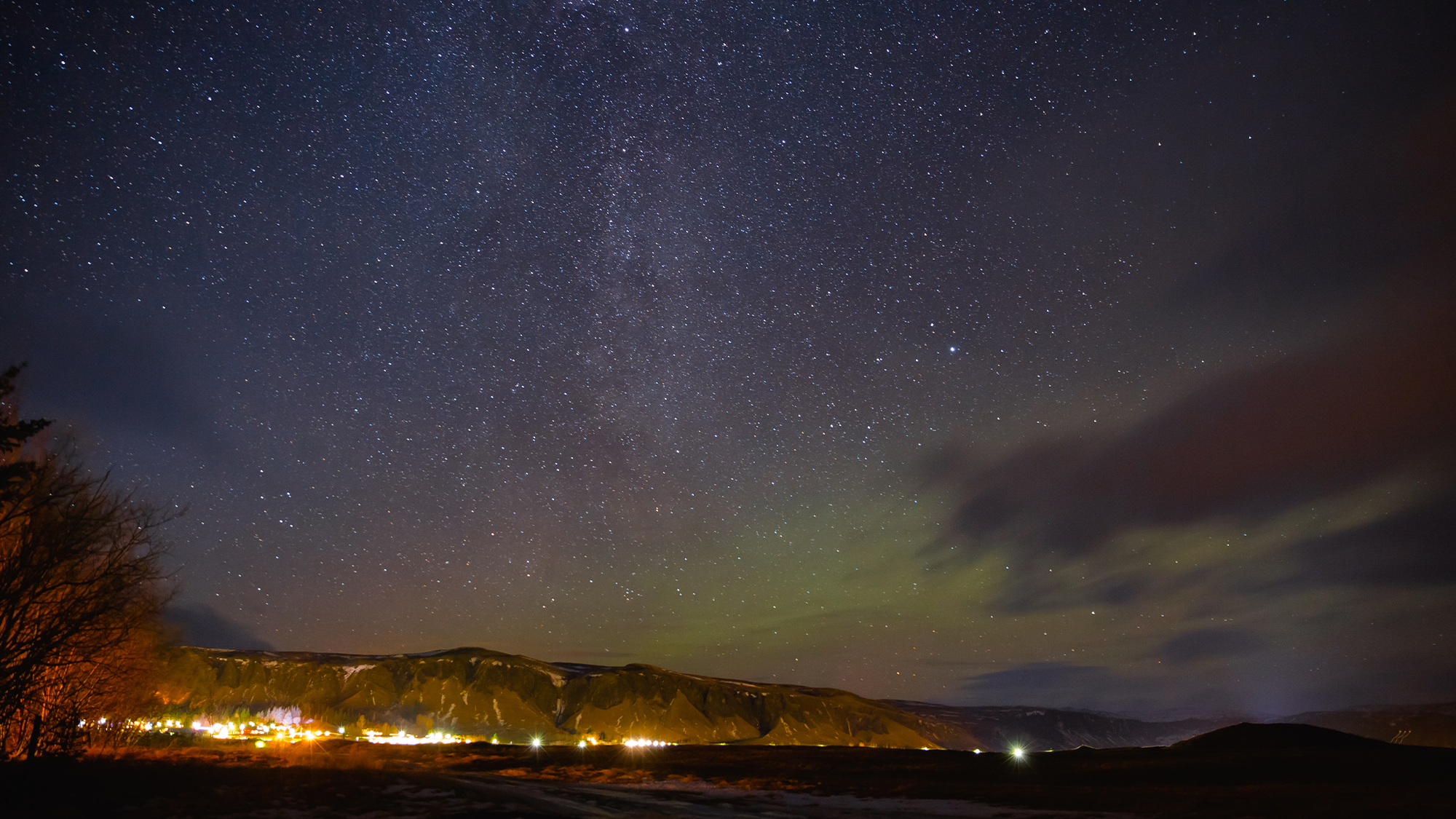

Gazing up at the night sky in awe and wonder can be a calming and almost primal joy, but stargazers are seeing fewer and fewer stars. A study published January 19 in the journal Science finds that every year, the night sky is getting seven to 10 times brighter, a quicker pace than measurements of artificial light emissions from Earth first suggested.
A research group from institutions in Germany and the United States analyzed over 50,000 observations from citizen scientists around the world from 2011 to 2022. The Globe at Night citizen science project has been up and running since 2006 and uses naked eye observations, or those without a telescope, and shows the important role that citizen science data can play in supplementing satellite measurements.
[Related: The switch to LEDs in Europe is visible from space.]
Long after sunset, an artificial twilight glows in many spots around the world and this skyglow is a form of light pollution. Not only does it hurt stargazing and astronomy, but the extra light can affect animals’ sense of daily and seasonal cycles.
“Skyglow affects both diurnal and nocturnal animals and also destroys an important part of our cultural heritage,” says Constance Walker, a co-author and head of the Globe at Night project from the National Science Foundation’s NOIRLab, in a statement.
Previously, the change in skyglow over time hasn’t been globally measured. Satellites can measure it, but existing sensors do not have enough sensitivity or accuracy.
Enter citizen scientists. Using people power to gather observational data through citizen science experiments is a promising approach to get more measurements. Globe at Night participants report which of a set of eight star charts best matches what they observe in the sky and each chart shows the sky under different levels of light pollution.

“The contributions of individual people work together as if they were a global sensor network, making new science possible,” said Christopher Kyba from the GFZ German Research Centre for Geosciences in Potsdam and the Ruhr University Bochum, in a statement.
This study analyzed data from 19,262 locations worldwide on taken on cloud- and moon-free nights over the past 11 years. To calculate the rate of change in sky brightness, they used a global model for sky brightness based on satellite data from 2014.
In Europe, the team found a 6.5 percent increase in brightness per year and a 10.4 percent increase in North America. “The rate at which stars are becoming invisible to people in urban environments is dramatic,” said Kyba. “If the development were to continue at that rate, a child born in a place where 250 stars are visible will only be able to see 100 stars there on his 18th birthday.”
The satellite data was seeing a slower growth in the amount of skyglow and the team was surprised at the speed at which skyglow was increasing. One of the reasons for different measurements from the satellites in space compared to those taken here on Earth has to do with changes in lighting practices.
[Related: Streetlights are making caterpillars grow up faster—and that’s a bad thing.]
“Satellites are most sensitive to light that is directed upwards towards the sky. But it is horizontally emitted light that accounts for most of the skyglow,” said Kyba. “So, if advertisements and facade lighting become more frequent, bigger or brighter, they could have a big impact on skyglow without making much of a difference on satellite imagery.”
Another factor is the switch from orange sodium vapor lamps to white LEDs, which emit much more blue light. “Our eyes are more sensitive to blue light at night, and blue light is more likely to be scattered in the atmosphere, so contributes more to skyglow,” said Kyba. “But the only satellites that can image the whole Earth at night are not sensitive in the wavelength range of blue light.”
While helpful, the citizen science approach does have some limitations. One is the locations where participants are stargazing and reporting. So far, people from Europe and North America have participated the most, and half of the contributions from Asia only come from Japan. In developing countries, it is suspected that rapid changes in artificial skyglow have also occurred, but there haven’t been as many measurements to date. “The most data comes from the regions of Earth where skyglow is currently most prevalent. That’s useful, but it means that we can’t say much about skyglow change in regions with few observations,” said Kyba.
The findings show that current lighting policies (like switching to LEDs) have not brought any improvement at the continental level yet, despite growing awareness about light pollution. They also demonstrate the role that citizen science data can play as a supplemental research tool.
“If we had broader participation, we could identify trends for other continents, and possibly even for individual states and cities. The project is ongoing, so feel free to take a look tonight and let us know what you see!” said Walker.
